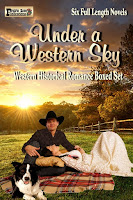When
researching locations for my second novel, Touched
by Love, I visited the famed King Ranch in south Texas ,
between Corpus Christi and Brownsville
“The story starts in the mid-1830s with an
eleven-year-old boy indentured by his destitute family to a jeweler in New York City
Sounds
like one of our novels, doesn’t it? But it’s the start of the amazing story of
Richard King, the King of Texas. After stowing away on a ship bound of the
south of the United States ,
he worked his way to captain and finally steam boat owner, moving goods and
passengers along the lower Rio
Grande River
Sometime
in the middle of the 1800s, Captain King crossed a region of Texas
known as the Wild
Horse Desert
Based
on a melding of the Southern Plantation and Mexican Hacienda styles of
management, King built a dynasty near what is now Kingsville , Texas Cruillas ,
Mexico
By
the end of the Civil War, King’s ranch had grown to more than 146,000 acres,
supporting thousands of head of his domesticated longhorn cattle. When he ran
into a problem, such as the lack of quality saddles and tack for his vaqueros,
he simply hired the finest craftsmen and moved them onto the ranch. [The Saddle Shop is still in operation: http://www.king-ranch.com/saddle_shop.html]
“Richard
King's sense of adventure was rivaled only by his vision and ability to seize
on new business opportunities. In addition to tirelessly working to improve the
ranch, he invested in building railroads, packinghouses, ice plants and harbor
improvements for the port
of Corpus Christi
And
things didn’t stop after Captain King’s death in 1885. In 1899, King’s
son-in-law, Robert J. Kleberg (he married King’s daughter, Alice) was drilling
for water when he discovered a huge underground river, bringing an end to the
decade long drought known as “the great die-up.”
 “During
this era, Robert J. Kleberg and King’s widow continued to improve and diversify
the assets of King Ranch with agricultural development, land sales, and town
building projects. In 1904, their efforts were instrumental in helping to build
the
“During
this era, Robert J. Kleberg and King’s widow continued to improve and diversify
the assets of King Ranch with agricultural development, land sales, and town
building projects. In 1904, their efforts were instrumental in helping to build
the
The
ranch’s innovations didn’t stop there. The number one registration in the
American Quarter Horse Association Stud Book was from the King Ranch Quarter
Horse program. They also produced the youngest horse ever to be inducted into
the National Cutting Horse Association Hall of Fame, Mr. San Peppy. Assault,
the 1946 winner of the Triple Crown, and Middleground, the 1950 winner of the
Kentucky Derby and the Belmont Stakes, both came from King stock.
Today,
the King Ranch is a huge operation, with more than 825,000 acres in multiply
states and countries, and Running W brand appears on tens of thousands of the
King Ranch’s Santa Gertrudis cattle, recognizable by their distinctive
black-cherry colored hide.
If
you want to know more, visit www.King-Ranch.com.
Or better yet, plan a trip to the ranch. You’ll be very glad you did.



I've only seen a part of the ranch and was blown away. Thanks for adding to my knowledge. Doris
ReplyDelete